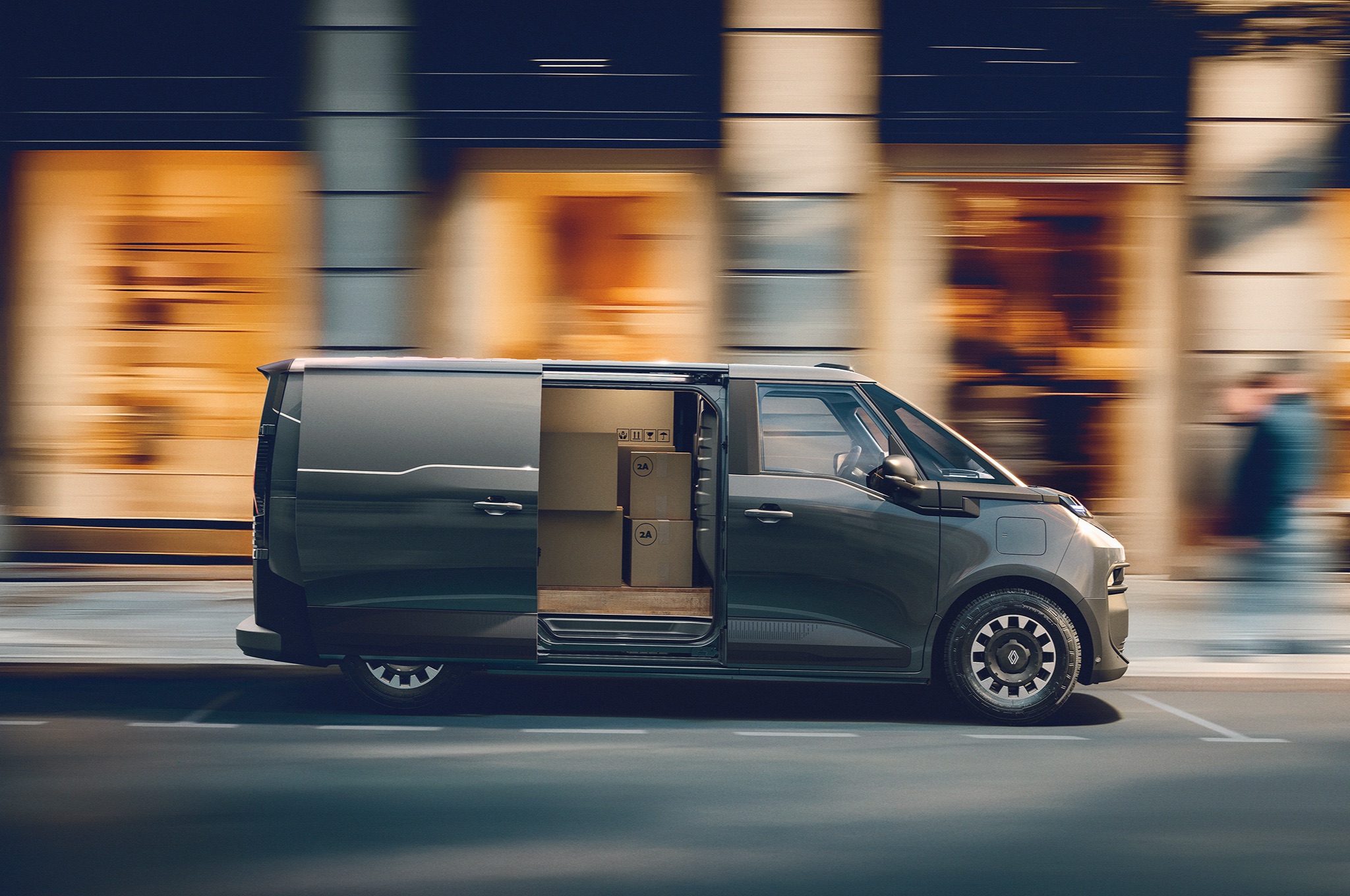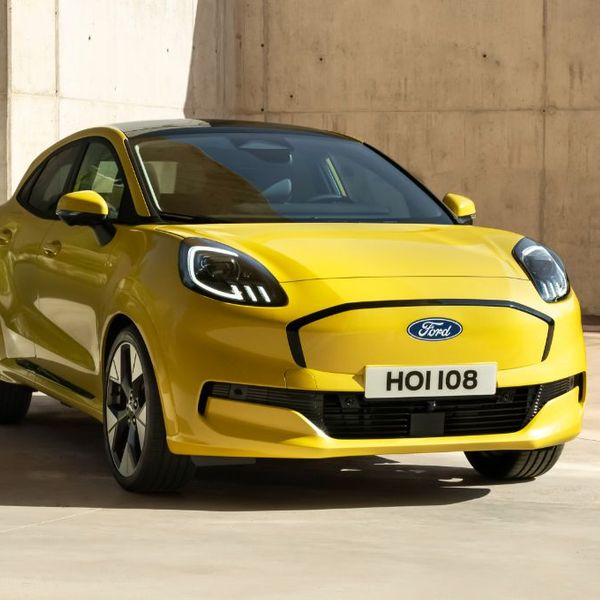Renault has unveiled the striking new fourth generation version of its Trafic van, and this one is electric through and through.
The Trafic name was first launched in 1980 and has become a staple part of van fleets across the world – Renault says it’s sold over 2.5 million of them – but this new version is the most advanced yet, and tellingly features some interesting tech that Renault hasn’t even used on its cars yet.
It’s built on a ‘skateboard’ chassis, which means that all of the electrics, battery components and motor are packed low on a skateboard-style rolling chassis that can built on top of with practically whatever you like.

It looks pretty space age
Well let’s talk about that crazy styling for a second – the Trafic tears up the van rule book with some sleek looks. It has split lights and a full width light strip up front and a light up logo on the back flanked by the Trafic’s now signature stacked rear lights.
The van has been designed in what Renault calls a ‘one box’ style – which means it looks like a single block rather than the traditional ‘three box’ shape you’d associate with an old fashioned saloon car – much like the striking new Kia PV5, which looks set to give the Trafic a run for its money.
The wiggly line down the side of the Trafic doesn’t mean the designer sneezed while drawing it, it’s actually meant to convey a sense of motion, so the van will look dynamic even while parked outside your neighbour’s house on double yellow lines with its hazard lights flashing.
Let’s talk motors and batteries
The Trafic will feature an e-motor on the rear axle for rear-wheel drive, producing 204hp and 345Nm of torque. We don’t know what the battery size will be, but Renault says there will be a long range version of the van with an NMC battery offering a range of 280 miles WLTP and an urban range version with an LFP battery with a range of around 217 miles WLTP will follow later. (What's the difference between NMC and LFP? Check out our guide here.)
The long range battery will likely be Renault’s existing 87kWh unit and the NMC battery the 50/60kWh unit that’s been hinted at for the Megane in 2026. The long range Trafic will feature ‘ultra fast’ charging with 800V tech, though we don’t know the speed just yet Renault says it will manage 15–80% in around 20 minutes.

What about carrying stuff?
The Trafic Van E-Tech (to use its pedigree name) has a towing capacity of 2,000kg and a maximum payload of 1,250kg (subject to homologation). It will also benefit from V2L and V2G capabilities, with plugs in the cabin and an adapter that can be used with the main charging socket, so you can really use it as a work van.
There will be two body styles available for the Trafic – L1 and L2. L1 will be 4.87 metres long and have a 5.1 cubic metre load space, while the L2 rolls in at 5.27 metres with a 5.8 cubic metre load space. Renault says the height has been reduced to 1.9 metres, however, so you can get the Trafic into an underground car park.
What’s it like inside?
The cabin is as practical as you’d expect, with plenty of areas for storage. The tube-style dashboard draws your attention, as well as the large 12in touchscreen infotainment running a new generation of Renault’s Google-based OpenR software.
Renault says that the Trafic has been designed as an ‘SDV’, or software-defined vehicle. We’re not really sure what that means, but it’s stuffed with usual tech and should be future proof thanks to its upgradeability.

This is all thanks to the consolidation of computer power in the van into one unit rather than many, which means that software can be updated over the air, but also that the van’s computer hardware can be easily upgraded over the life of the vehicle. Clever stuff.
There are other little touches for the commercial market that show Renault’s really thought things through. The satnav has been designed to account for the fact that you’re driving a van, and there’s a QR code-based identification system for drivers. Renault has also designed its software so that companies can integrate their own software into the van’s infotainment setup without having to rely on extra screens or mobile devices.
When can I get one?
We’re getting a good look now, but it’s not going to launch in the UK until early 2027 with this van version, and then Renault will follow later on with chassis cab, platform cab, tipper, flatbed and cargo box versions.
It’s set to be built in France, and can be customised by Renault’s in-house firm if you’d like something a little more bespoke. No word on prices yet... Want more van content? Check out our van page here.
 Doors on the 2027 Renault Trafic are extra big so you can fit a euro pallet in through the back and side
Doors on the 2027 Renault Trafic are extra big so you can fit a euro pallet in through the back and side 










